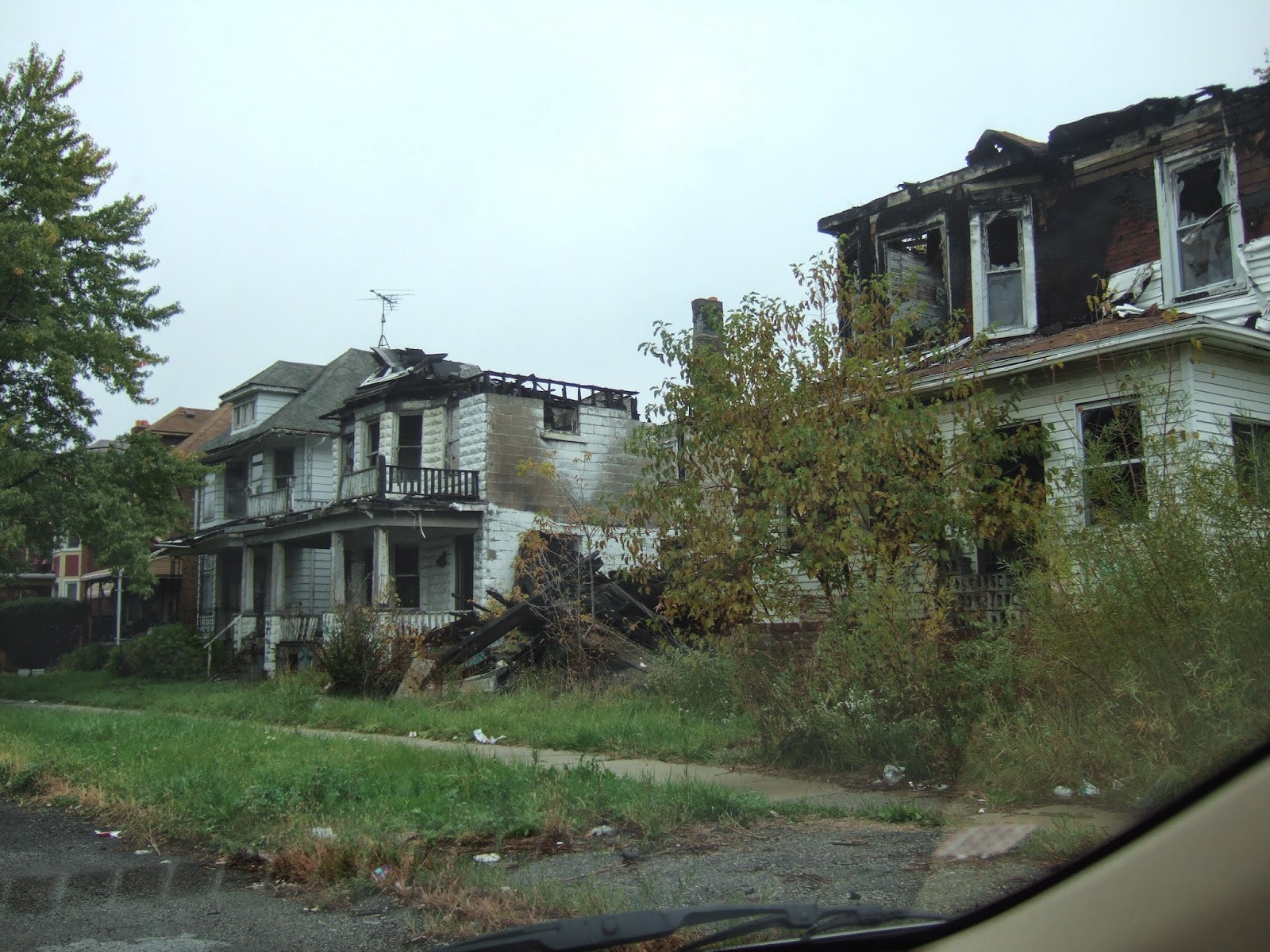Despite the grimness of the much of Detroit there are remnants of greatness and, in places, signs of revitalization. Not enough to overcome the large population decline in many of the neighborhoods, but clear indications that the city may have hope of entering a period of split personality with a revitalized core surrounded by depopulated neighborhoods extending to the suburbs.
Most of Michigan Avenue, the main arterial from downtown to the west, is lined with abandoned and sometimes burnt out buildings from the west edge of the city to very near the downtown core. But just west of downtown the Corktown area appears to be redeveloping in a manner not so different than other formerly declined neighborhoods in many other cities.
And we did like the name of this pub.
The Detroit Institute of Arts
http://www.dia.org/ has been targeted by creditors to the city as a source of funds. For the time being it appears that the City will not be selling off its art collection. The museum is one of the finest in the United States and its loss would be far more than a loss for Detroit. Three counties in the region have chipped in via voter approved taxes to increase the museum endowment fund.
A few favorite American landscape painters:
Lonely Pine by George Innis
Cotopaxi by Frank Church
Indian Telegraph by John Mix Stanely
Kaaterskil Falls by Sanford Robinson Gifford
Cascade in the Forest by John Frederick Kensett
The neighborhoods from downtown to the Art Institute and around Wayne State University were very appealing and if that was all you saw of Detroit the impression would be that of a great city.
A bit to the north is the enclave of Highland Park, a city very nearly surrounded by Detroit. A drive through the Boston Historic is a chance to see a wide, mansion lined street.
The mansion lined street is very attractive. However, Highland Park is in many ways even worse off than Detroit. An early Ford auto plant was a major source or tax revenue for this city, but its closing as well as depopulation of the small city from over 52,000 to approximately 11,000 has left swaths of derelict homes and apartments just one or two blocks from the mansions in the Historic District. The City has been run by an Emergency Manager appointed by the State of Michigan since 2001. A massive change in fortune since the heady days of the 1910 to 1930.
We ate at Telway Hamburgers twice
One other consistent bright spot can be seen just to the right of Telway Hamburgers (4 burgers for $3). Perhaps a sign of the times, but despite the population loss and mostly abandoned commercial districts the economics of our drug industry is healthy even in Detroit with numerous newish drug stores one of the few new buildings consistently present through various neighborhoods.
Quiken Loans has invested heavily in the downtown area. The company appears to be making a difference in the core of the city, but it is still very hard to visualize how many of the neighborhoods will recover and how those folks who remain can find a better life.
It is my view that it is not possible to reach any conclusions about any city during a short visit. That said, it is always a thought provoking experience to see something different. Detroit holds some lessons. Some of those lessons might be a bit late for Detroit itself, but other cities, and I would suggest even small cities cold learn a few lessons from Detroit.



















































